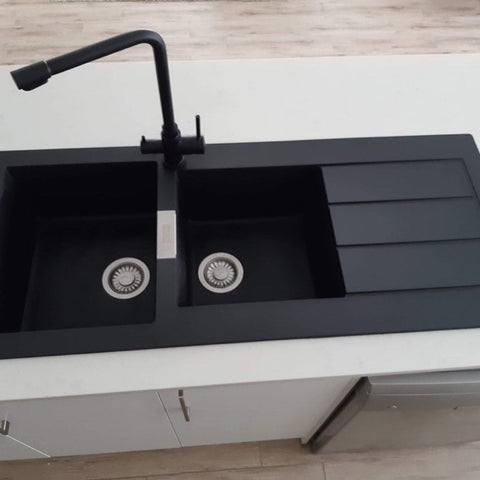In Australia, where water is a precious resource, conserving water is more crucial than ever. As the population grows and the climate changes, water efficiency has become a major concern. One of the primary areas where water conservation can make a significant impact is in our bathrooms. We will address the importance of water conservation in Australian bathrooms and the role that bathroom taps play in achieving this goal.
Why is Water Conservation So Important in Australia?
Australia's arid climate and frequent droughts make water conservation essential. Effective water management is crucial for maintaining agriculture, improving ecosystems, and guaranteeing a steady supply of water for communities in the face of finite freshwater resources and population growth. Conservation initiatives lessen the burden on water infrastructure, preserve natural habitats, and lessen the effects of climate change. Australians can help create a more sustainable future and protect this essential resource for future generations by implementing water-saving behaviours and technologies. Water conservation is now a national priority as a result.
We have the chance to contribute significantly to the water conservation impact by being careful about our bathroom, where we use water on a daily basis for a variety of purposes. By emphasizing the function of bathroom taps, we can put a few workable solutions into place to cut down on water waste and encourage sustainability.
How Do Bathroom Taps Contribute to Water Conservation?
When it comes to water conservation, bathroom taps are essential. Contemporary tapware designs integrate cutting-edge technologies to reduce water consumption without sacrificing functionality. The following are some important characteristics and developments in bathroom taps that help save water:
1. Aerators: These are tiny devices that are attached to the end of tap spouts. By combining air and water, they lower the flow rate while keeping the pressure sufficient. This straightforward but efficient technology can drastically cut water use without degrading user experience.
2. Flow Restrictors: These days, a lot of bathroom taps have built-in flow restrictors that reduce the volume of water that can pass through them. These gadgets are made to keep the water flowing steadily so that there is enough for activities like hand washing and tooth brushing without wasting any more.
3. Sensor-Activated Taps: In both residential and commercial settings, sensor-activated taps are growing in popularity. These taps reduce water waste from leaving them running by using infrared sensors to detect the presence of hands and turn them on and off automatically.
4. Temperature Control: A lot of contemporary bathroom taps have temperature control systems that let users rapidly adjust the water's temperature to their preferred level. As a result, less water is wasted waiting for the water to warm up because less time is spent adjusting the temperature.
The Economic and Environmental Advantages of Bathroom Taps
In addition to saving water, installing water-saving technologies in bathroom taps has a number of positive economic and environmental effects. Households and businesses can save money by consuming less water, which results in lower water bills. Water conservation also lowers greenhouse gas emissions by lowering the energy needed for water distribution and treatment.
Moreover, local ecosystem sustainability is enhanced by water conservation initiatives. We can support biodiversity and protect natural habitats by lowering the demand for water resources. Australia will have a more sustainable future with every drop of water saved.
One tap at a time, we can make a difference. With one tap at a time, it's possible to make a difference! Conserving water in bathrooms is essential to solving the nation's water shortage issues. We can significantly reduce water waste by emphasizing the function of bathroom taps and implementing water-saving technologies. These initiatives have advantages beyond protecting the environment; they also save money and help create a sustainable future. So let's take action to save water and change the world.




